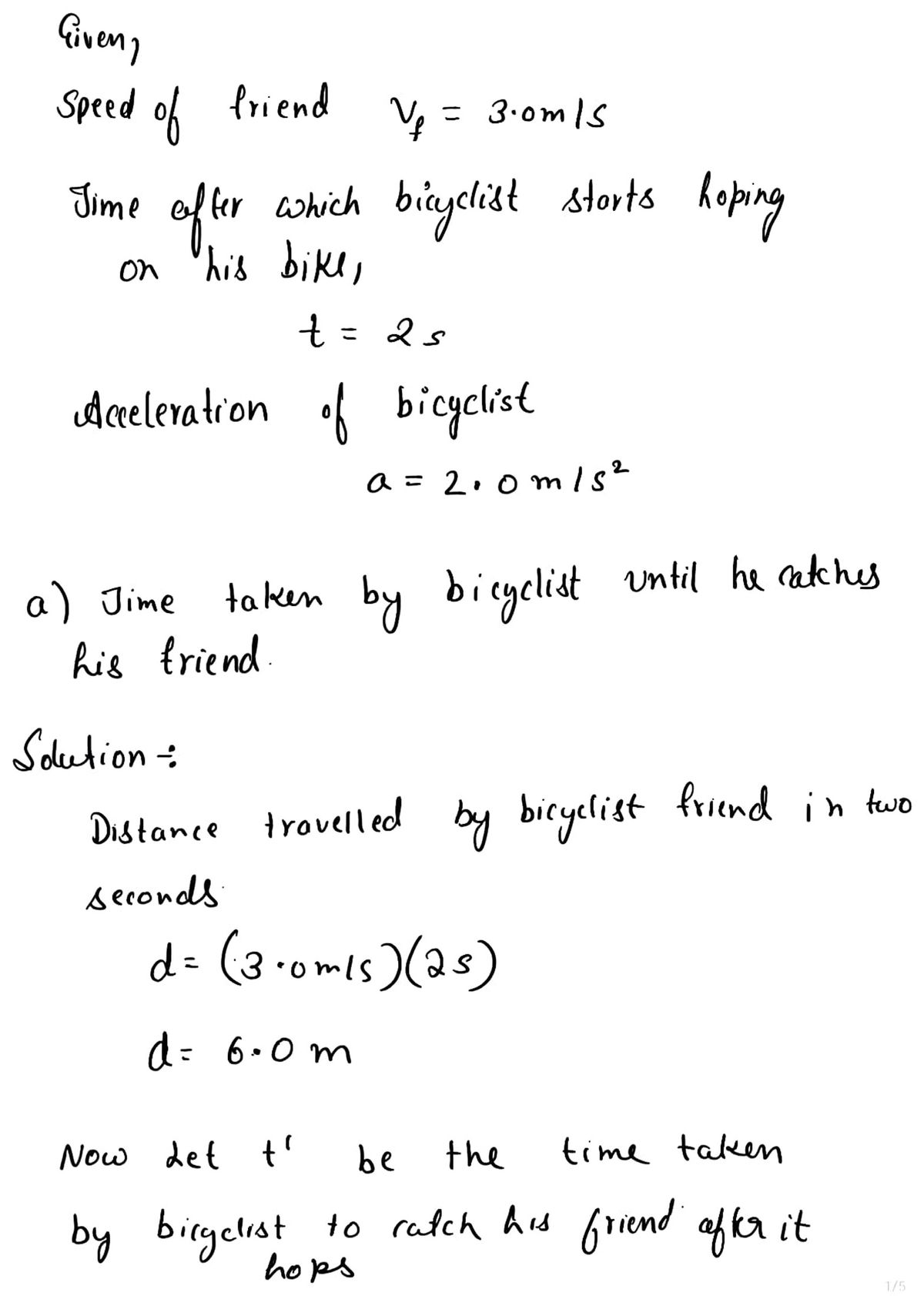Part A A bicyclist is finishing his repair of a flat tire when a friend rides by with a constant speed of 3.0 m/s. Two seconds later the bicyclist hops on his bike and accelerates at 2.0 m/s until he catches his friend. How much time does it take until he catches his triend (after his triend passes him)? Express your answer using two significant figures. Templates Symbols undo redo Teset keyboard shortouts help Submit Request Answer Part B How far has he traveled in this time? Express your answer using two significant figures. Templates Symblols undo rego reset keyboard shortcuts help m Submit Request Answer Part C What is his speed when he catches up? Express your answer using two significant figures. Temgtates Symbols undo redo Teset keyboard shortcuts Help m/s Submit Request Answer
Displacement, Velocity and Acceleration
In classical mechanics, kinematics deals with the motion of a particle. It deals only with the position, velocity, acceleration, and displacement of a particle. It has no concern about the source of motion.
Linear Displacement
The term "displacement" refers to when something shifts away from its original "location," and "linear" refers to a straight line. As a result, “Linear Displacement” can be described as the movement of an object in a straight line along a single axis, for example, from side to side or up and down. Non-contact sensors such as LVDTs and other linear location sensors can calculate linear displacement. Non-contact sensors such as LVDTs and other linear location sensors can calculate linear displacement. Linear displacement is usually measured in millimeters or inches and may be positive or negative.


Trending now
This is a popular solution!
Step by step
Solved in 4 steps with 4 images









